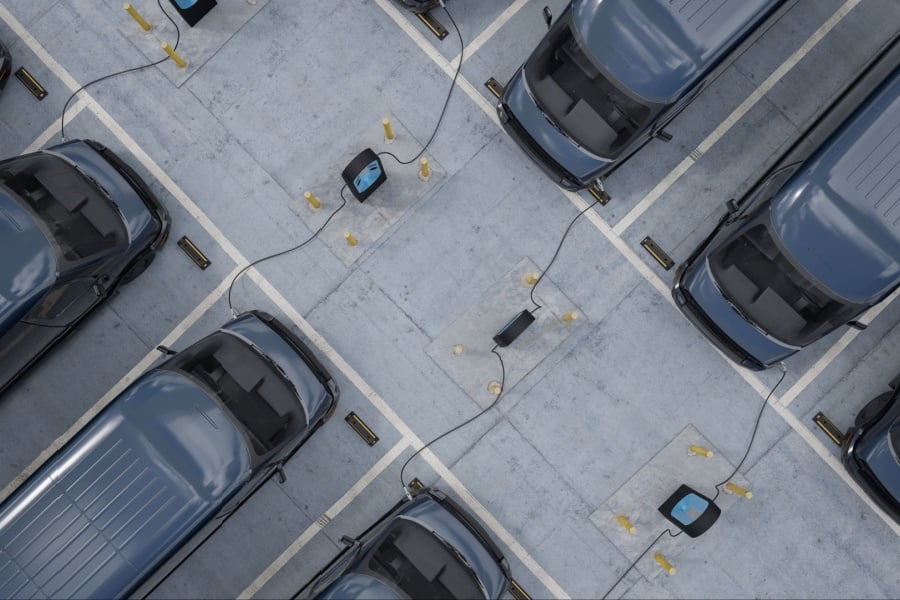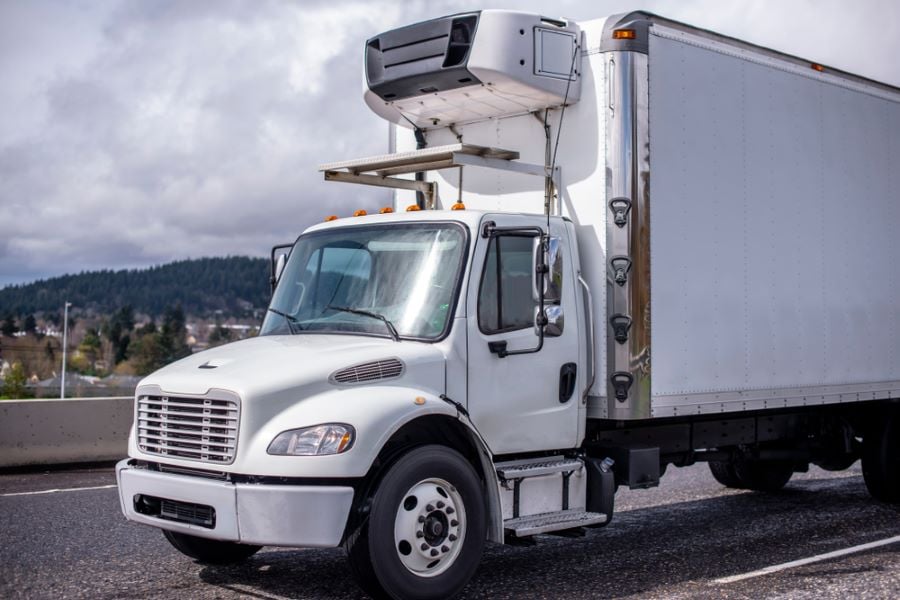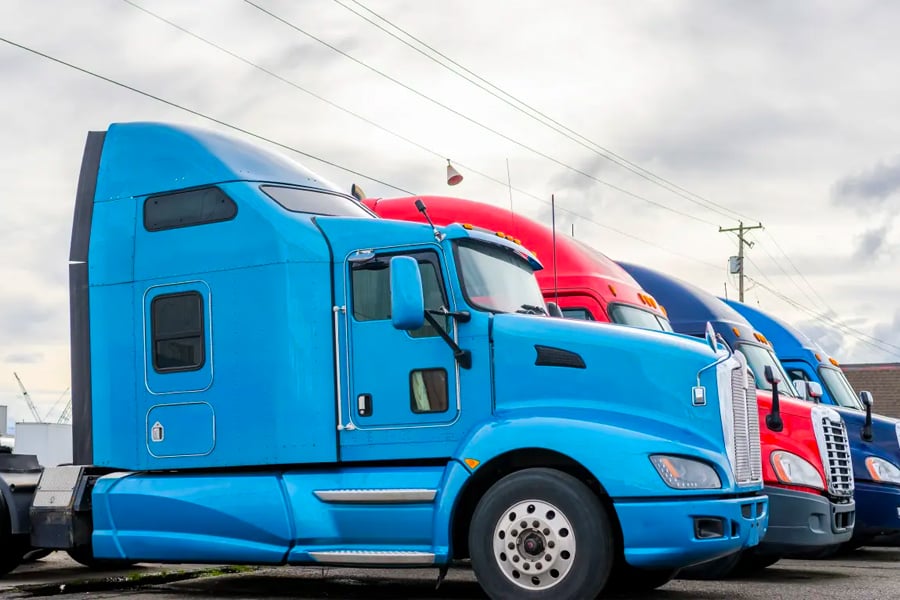Global electric vehicle (EV) sales are soaring, boosted by real-world results, improved battery energy density, and cost-of-ownership assessments.
However, switching your fleet to EVs brings about unique questions, concerns, and considerations of its own.
In this guide, you’ll find valuable insights and guidance you can use to electrify your fleet. We’ll cover all aspects of fleet electrification, from conducting a feasibility study and developing an electrification strategy to implementation and ongoing tracking.
We’ll also explore topics such as assessing vehicle fit, determining charging infrastructure requirements, accessing grants and incentives, and managing maintenance and optimization, equipping you with what you need to know to make informed fleet electrification decisions successfully.
How to assess feasibility and develop an electrification strategy
Transitioning to electric vehicles can bring a reduced carbon footprint and increased sustainability, while helping a you meet government mandates. To ensure a smooth electrification process, assessing the feasibility and developing a tailored electrification strategy is crucial.
This involves understanding the benefits of fleet electrification, conducting an in-depth fleet analysis, and developing a roadmap for successful EV adoption.
First, conduct an in-depth fleet analysis
Before transitioning to electric vehicles, conducting a comprehensive fleet analysis is crucial. This involves evaluating vehicle requirements, usage patterns, and potential barriers that may arise during the electrification process.
Understanding the fleet’s specific needs will help identify which vehicles are suitable for electric conversion and whether any adjustments are required in terms of charging infrastructure, driver training, or operations.
During the fleet analysis, assess factors such as:
- Vehicle range requirements
- Charging infrastructure availability
- The charging habits of drivers
This analysis will help you determine the number and types of EVs needed, identify any limitations or challenges associated with charging infrastructure, and anticipate any potential barriers to successful electrification.
Develop a tailored electrifications strategy
With a thorough understanding of the benefits and a completed fleet analysis, developing a tailored electrification strategy becomes easier.
This involves setting clear milestones, identifying potential risks, and engaging stakeholders to create a roadmap for successful EV adoption.
- Setting clear milestones will help businesses track and measure progress throughout the electrification process. It is essential to establish achievable short-term and long-term goals, such as a percentage of fleet electrification over a specific timeframe. By doing so, businesses can create a sense of direction and maintain momentum in the electrification efforts.
- Identifying potential risks and challenges is also crucial to strategy. This may include factors such as charging infrastructure limitations, vehicle availability, driver resistance, or financial constraints. By acknowledging and addressing these risks in advance, businesses can develop contingency plans and allocate resources effectively to mitigate potential obstacles.
- Engage stakeholders, including fleet managers, drivers, finance personnel, and facilities management. This is vital to ensure successful electrification. Collaboration and transparent communication will build support and enthusiasm for the transition to EVs. Stakeholders’ input can also assist in developing strategies that address their concerns and needs, leading to a more effective and efficient electrification plan.
Assessing the feasibility of and developing an electrification strategy are crucial steps for businesses looking to transition their fleets to electric vehicles. Understanding the benefits of fleet electrification, conducting an in-depth fleet analysis, and developing a tailored electrification strategy will help achieve financial savings, reduce carbon footprints, and create a sustainable future.
Assess vehicle fit and charging infrastructure requirements
When considering electrification for your fleet, understanding the different vehicle types available as well as their specific range requirements and payload capabilities is critical. This will help you determine which vehicles in your fleet are best suited for electrification.
Examine vehicle suitability
To determine which vehicles are best suited for electrification, examine what kind of vehicles your fleet currently uses.
- Start by understanding the different types of electric vehicles available for commercial trucking. Explore options like battery electric vehicles (BEVs) and plug-in hybrid electric vehicles (PHEVs). Compare their features, benefits, and limitations to determine which type suits your fleet’s needs.
- Consider your fleet’s range requirements based on the typical distance your trucks cover in a day. Evaluate the charging infrastructure available in your area to ensure reliable recharging, especially for longer routes. Assess the battery capacity and charging times of potential electric trucks to ensure they can meet your fleet’s operating needs.
- Assess the payload capabilities of electric trucks to ensure they can handle the loads your fleet typically carries. Consider the weight distribution, towing capacity, and any specific requirements. Compare this information across different electric truck models to determine their suitability for your fleet’s payload needs.
- Evaluate the total cost of ownership for electric trucks compared to their conventional counterparts. Consider factors such as upfront costs, fuel and maintenance savings, tax incentives, and potential grants or funding available. This analysis will help you determine the financial feasibility of electrifying your fleet.
Remember to consult with experts, such as electric vehicle manufacturers or fleet management specialists, who can provide specific insights tailored to your fleet’s needs. By carefully considering vehicle types, range requirements, and payload capabilities, you’ll be well-equipped to determine which electric vehicles are best suited for electrifying your truck fleet.
Evaluate charging infrastructure needs
The next step is to evaluate the charging infrastructure requirements. Consider charging solutions that would work best for your fleet, such as home charging, workplace charging, or utilizing public charging stations.
Assessing power requirements is crucial to ensure that the charging infrastructure can support the energy needs of your electric vehicles. Additionally, understanding the infrastructure costs associated with installing and maintaining the charging stations is important for budgeting and planning purposes.
Explore connectivity and smart charging solutions
Explore connectivity and smart charging solutions to maximize the efficiency of your electric vehicle fleet. These solutions leverage data and technology to optimize charging operations and make informed decisions.
By collecting and analyzing real-time data on energy usage, charging patterns, and vehicle availability, you can better manage the charging process to avoid overloading the grid during peak demand periods. Implementing demand response strategies allows you to shift charging times to off-peak periods, taking advantage of lower energy costs and reducing strain on the grid.
Smart charging solutions also enable remote monitoring and control of charging stations, facilitating proactive maintenance and minimizing downtime.
Grants, incentives, and funding
There’s no question that the up-front cost of EVs is higher than that of fossil fuel vehicles. However, there are incentives, grants, and tax credits available at the federal and state levels that can help ease the financial burden.
At the federal level, the following are currently available:
- The Commercial Clean Vehicle Tax Credit
- Diesel Emissions Reduction Act
- The Clean Heavy-Duty Vehicle Program
- Reduction of Truck Emissions at Port Facilities
- Carbon Reduction Program (This program provides funding to states. Contact your state department of transportation to find out more.)
Explore the EV Funding Finder to discover other available funding specific to your organization. Businesses can also tap into research and development funding.
Explore potential partnership opportunities with industry organizations or institutions to access additional funding for your EV transition.
The Electrification Coalition, for example, has a consortium for collaboration for private-sector partners to share ideas and find opportunities.
Managing maintenance and optimization
Creating a comprehensive maintenance plan for EVs requires understanding their specific maintenance requirements and identifying potential cost savings through optimized maintenance practices.
Follow these steps:
1. Research EV maintenance requirements and familiarize yourself with the manufacturer’s maintenance recommendations and any specific requirements for the EV model or battery technology.
2. Create a maintenance schedule based on the manufacturer’s recommendations.
3. Establish a record-keeping system and maintain records of all maintenance activities, including dates, tasks performed, and any issues encountered. This tracks the vehicle’s maintenance history so you can identify patterns or recurring problems that may require attention.
4. Optimize maintenance practices by exploring ways to improve efficiency and cost-effectiveness and minimize downtime. Consider techniques such as predictive maintenance, which uses sensors and data analysis to anticipate maintenance needs and prevent breakdowns.
5. Ensure that maintenance personnel are properly trained on EV-specific maintenance procedures. Provide the necessary resources, tools, and equipment to perform tasks efficiently and safely. Encourage continuous learning to stay updated on new EV technologies and maintenance best practices.
6. Promote preventive maintenance. Emphasize the importance of preventive maintenance
7. Monitor and evaluate. Continuously monitor the effectiveness of the maintenance plan by tracking key performance indicators, such as maintenance costs per vehicle and average downtime. Use this data to identify areas for improvement and adjust the plan as needed.
Streamlining operations and optimizing charging schedules
Today, it’s all about data, and leveraging data and telematics can greatly optimize fleet operations and enhance overall management.
Here are some suggestions to streamline fleet operations, ensure efficient charging schedules, and maximize efficiency:
- Utilize telematics to track vehicles in real-time, monitor their performance, and gather data on fuel consumption and battery charge levels. This data will help identify any inefficiencies, track maintenance needs, and optimize charging schedules for electric vehicles.
- Optimize routes by analyzing historical data and integrating it with real-time traffic updates to optimize routes for each vehicle. This will minimize fuel consumption, reduce emissions, and ensure efficient charging schedules for electric vehicles by planning routes that include charging stations along the way.
- Use data from telematics and vehicle sensors to predict maintenance needs before they become major issues.
- Monitor driver behavior using telematics data to identify areas for improvement. By encouraging safe and fuel-efficient driving habits, you can minimize wear and tear on your vehicles, improve fuel efficiency, and optimize charging schedules.
- Implement automated reporting systems that provide detailed insights into fleet performance, fuel consumption, charging schedules, and maintenance needs. This will help you identify trends, make data driven decisions, and streamline processes.
- Analyze charging patterns and data to determine the most cost-effective charging schedules for electric vehicles. By avoiding peak electricity demand hours and maximizing off-peak charging, you can reduce energy costs and ensure efficient use of charging infrastructure.
Integrate fleet telematics data with facilities management systems to ensure proper charging infrastructure maintenance and utilization to proactively address any issues, plan maintenance schedules, and optimize charging station availability.
Implement tracking systems and reporting
Monitoring and benchmarking your EV fleet’s key performance indicators (KPIs) is crucial for effective management and identifying improvement opportunities.
1. Identify the most relevant KPIs for your EV fleet. These may include metrics such as energy consumption, charging efficiency, average range per charge, fleet utilization, maintenance costs, and overall emissions reduction.
2. Gather and analyze relevant data from various sources, such as charging infrastructure, vehicle telematics, energy consumption meters, maintenance logs, and more. This comprehensive approach enables a holistic view of your fleet’s performance.
3. Use the collected data to monitor and track the selected KPIs over time. This enables you to gauge progress, detect trends, and identify any areas that require attention or improvement.
4. Benchmark your fleet’s performance against industry standards or competitor data if available.
5. Showcase the success of your EV fleet by generating regular reports and visualizations that present KPI trends, performance metrics, and insights.
Electrification excellence can be yours
By following the guidance presented in this guide, your business can achieve reduced operational costs, enhanced sustainability, and a future-ready fleet. Remember, a successful transition hinges on a well defined plan.
Carefully consider the financial benefits, environmental impact, and long-term vision for your fleet. Embrace data and utilize the insights it provides to streamline operations and maximize efficiency.
The road to electrification may seem complex, but with careful planning and a commitment to sustainability, your business can become a leader in the transition to a clean and sustainable transportation future.
Don’t hesitate to seek guidance from experts and industry organizations, like RyderElectric+, throughout the journey. By taking this crucial step, you’ll be leaving a positive impact for generations to come.




